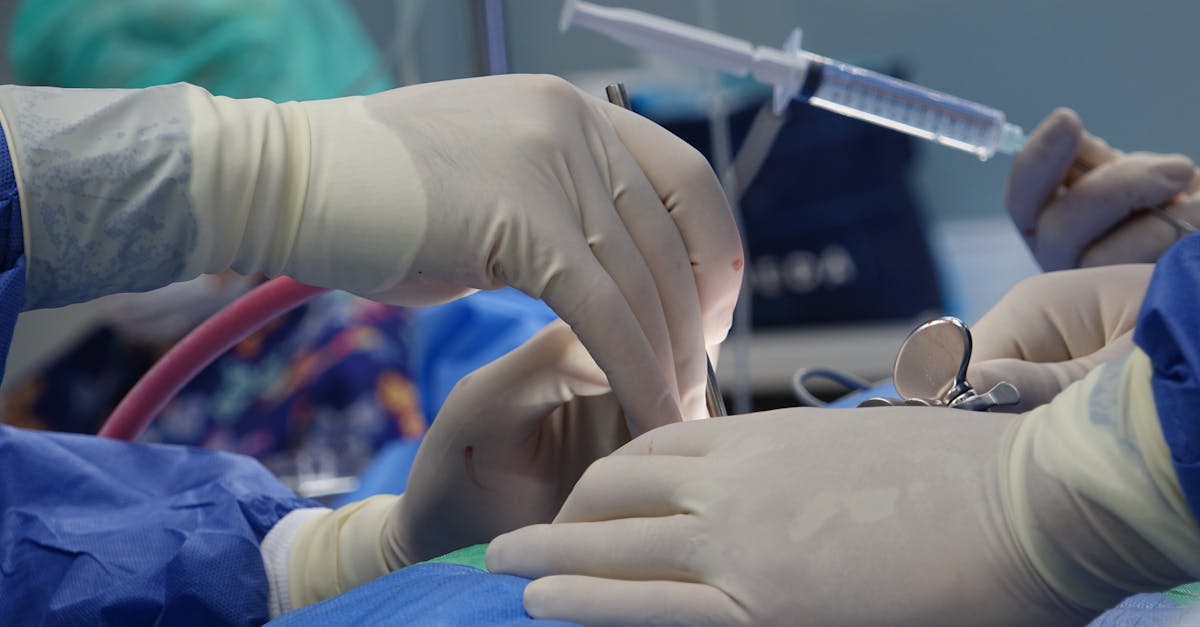Are foods that trigger migraines causing you pain and discomfort?
In Short: Understanding the foods that trigger migraines is essential for managing migraine pain and finding migraine relief. By identifying common migraine triggers, such as certain ingredients in your diet, you can effectively reduce the frequency and intensity of your episodes. This proactive approach helps you take control of your health and promotes a sense of well-being. Pulse Align emphasizes a holistic perspective, allowing you to explore natural headache remedies and tailored strategies to navigate your dietary choices. Reclaim your health and wellness at Pulse Align Clinics. BOOK YOUR APPOINTMENT today!
Are you struggling with chronic migraines and finding effective migraine relief?
Foods that trigger migraines can have a profound impact on your daily life, making it essential to understand and avoid these pitfalls. By exploring a holistic perspective with Pulse Align, you can uncover the connection between diet and migraine pain, enabling you to take proactive steps toward headache relief. Many individuals experience various types of migraines, including hormonal headaches and tension headaches, often compounded by nausea with headache. This comprehensive approach empowers you to identify specific migraine triggers while navigating your migraine diet more effectively, helping to reduce the severity and frequency of your headaches.

Many individuals face unseen challenges brought on by migraines, and understanding their potential triggers can lead to improved well-being. At Pulse Align, we emphasize the importance of posture improvement and aim to support our clients through a gentle exploration of neuromuscular recalibration. This holistic approach promotes natural balance in the body, paving the way for enhanced harmony and comfort.
The Essence of Natural Balance
Whether you seek to manage discomfort or enhance your overall wellness, recognizing factors such as muscle tone and posture is essential. Pulse Align utilizes gentle stimulation techniques designed to realign muscle symmetry and promote a sense of tranquility within the body. Our clients often experience that as they engage in strengthening their core and fostering body awareness, they also improve their posture naturally, allowing for greater freedom in movement.
A Family-Centric Approach to Wellness
At Pulse Align, we celebrate health as a family journey. We believe that our services are not just for individuals but can be included in the wellness routines of families, including children and pregnant women. Clients have voiced their appreciation for how our holistic practices promote enhanced posture and comfort; perhaps they discovered their own rhythm with gentle adjustments that incorporated breathing exercises and mindful movement.
Join Us on Your Journey to Well-Being
Ready to explore how you can reclaim a balanced life? We invite you to book a consultation at one of our convenient Pulse Align locations in cities such as Montreal, La Prairie, Terrebonne, or Chicoutimi and beyond. Explore our services as a way to enhance your family’s wellness while working in tandem with your existing healthcare practices. Remember, Pulse Align celebrates the body’s natural capabilities while complementing any approaches you have in place.
- Alcohol – Can induce severe headaches.
- Caffeine – High intake may lead to migraines.
- Chocolate – Known for triggering migraine episodes.
- Dairy Products – Certain types, like cheese, are problematic.
- Processed Meats – Often contain MSG and nitrates.
- High-Sodium Foods – Can increase blood pressure and headaches.
- Artificial Sweeteners – E.g., aspartame, may be linked to migraines.
- Fermented Foods – Can contain histamine, a known trigger.
- Citrus Fruits – May provoke headaches in some individuals.
- Nuts – Common trigger for many migraine suffers.

Understanding migraine triggers is vital for managing chronic migraines and achieving headache relief. Many individuals suffer from debilitating headaches that can significantly impact their daily lives. Among the various triggers, certain foods play a critical role in provoking migraine pain. This article delves into the foods that can trigger migraines and offers a holistic perspective by Pulse Align to help you navigate these challenges.
Take Action for Improved Well-Being
By recognizing foods that trigger migraines and adopting a holistic approach, you can reclaim your life from debilitating headaches. Understanding the underlying headache causes, such as dietary sensitivities and hormonal fluctuations, empowers you to take control of your health. If you’re seeking personalized assistance, consider booking a consultation with Pulse Align. Together, we can explore tailored strategies for managing migraine pain effectively and enhancing your overall well-being.
Implementing a Migraine Diet
Adopting a migraine diet involves eliminating potential trigger foods for a specified period. For instance, if you suspect a particular food item contributes to your headaches, avoid it for at least four weeks. If your symptoms improve, you may have identified a trigger. This focused approach aligns with holistic practices by fostering natural headache remedies and enhancing overall well-being.
The Role of Hormonal Changes
Women may experience hormonal headaches, especially around menstrual cycles or during pregnancy. Awareness of how your dietary choices can coincide with these hormonal fluctuations can be beneficial. Incorporating more anti-inflammatory foods may help mitigate the severity of these headaches, promoting a natural balance.
Tracking Foods and Migraines
Drink and food timing are crucial; triggers often activate symptoms within 12 to 24 hours after consumption. This delayed reaction emphasizes the need for vigilance in recognizing patterns. Foods such as cured meats, artificial sweeteners, and products containing aspartame have been linked to migraine episodes. By carefully tracking your intake and symptoms, you can craft a personalized strategy for avoiding specific triggers.
Holistic Coping Techniques
Incorporating holistic techniques can complement your dietary adjustments. Practices like yoga, meditation, and core strengthening exercises promote overall health and stress reduction, which can lessen the frequency of tension headaches. Natural remedies, including essential oils for headaches, can provide additional comfort and alleviate symptoms.
Foods to Avoid for Migraine Prevention
| Food Category | Description |
| Alcohol | Common trigger that can provoke severe headaches. |
| Caffeine | May cause headaches when consumed in excess or after withdrawal. |
| Chocolate | Contains compounds that may trigger migraine in some individuals. |
| Dairy Products | Some cheeses and milk can provoke migraines in sensitive people. |
| Processed Meats | Often contain preservatives like nitrates that may trigger headaches. |
| MSG | Flavor enhancer known to trigger migraines in some individuals. |
| Artificial Sweeteners | Compounds like aspartame may lead to headache episodes. |
| Fermented Foods | Foods like sauerkraut can contain histamines, which may induce migraines. |
| Nuts | Commonly reported as a trigger for migraine symptoms. |
| Certain Fruits | Citrus and others may trigger symptoms for some individuals. |

The Wellness Journey: Transformative Benefits with Pulse Align
At Pulse Align, our unique and holistic perspective on migraine management has empowered countless clients to identify and avoid foods that trigger migraines. By prioritizing the body’s natural ability to recalibrate and restore balance, we have witnessed remarkable improvements among our clients. Many have reported a significant reduction in migraine frequency and severity after adopting our tailored approach.
In La Prairie, clients have found immense value in revitalizing their wellness journeys with our services. They appreciate how we emphasize a holistic methodology that not only focuses on dietary adjustments but also on overall body function. Through personalized consultations, we have facilitated the discovery of food triggers, allowing clients to make informed choices that positively impact their health.
Our commitment to collaboration with healthcare teams is a central tenet of our practice. Clients, such as those from Mont-Royal and Châteauguay, have expressed gratitude for the seamless integration of our services with their existing medical care. By working together, we aim to support both our clients and their families in navigating the complexities of migraine management.
The heartfelt testimonials from our clients in regions like Chicoutimi and Sainte-Marie echo the success of our holistic methods. Many have shared their stories of resilience and newfound hope as they embrace a lifestyle free from debilitating migraine attacks. These inspiring journeys affirm the belief that lasting wellness can be achieved with the right support and understanding.
For those residing in Panama City or nearby, Pulse Align provides a sanctuary where individuals can explore their wellness options. Our clients regularly share their experiences of healing and transformation, reinforcing the positive impact of our personalized approach to migraine management. We invite everyone in these communities to reconnect with their vitality through the comprehensive care we offer.
Discover more about our holistic services by checking out Our Clinics. Pulse Align is dedicated to guiding you along your journey to improved health and well-being.
Understanding Migraines and Food Triggers
Identifying food triggers plays a crucial role in managing the debilitating nature of migraines. Certain items such as alcohol, chocolate, and caffeine have been linked to provoking intense headaches in individuals who are susceptible. By keeping a detailed food diary and correlating it with migraine occurrences, those affected can pinpoint their specific triggers, paving the way for better management and relief.
It is important to track the timing of consumption, as drinks or foods may serve as triggers if they result in an attack within 12 to 24 hours of ingestion. A migraine can strike as quickly as 20 minutes after consuming a trigger food. If one suspects a particular food item to be a trigger, it is advisable to eliminate it from the diet for at least four weeks to assess any changes in migraine frequency.
There is a comprehensive list of potential food items known to trigger migraine attacks. Common offenders include those containing histamine and MSG, aged cheeses, chocolate, dairy products, and artificial sweeteners such as aspartame. To minimize migraine symptoms, awareness and avoidance of these triggers can significantly lower the risk of experiencing episodes.
Our Mission
Our mission is to empower individuals suffering from migraines with knowledge and practical strategies to identify and avoid their specific food triggers. By fostering a supportive community and breaking down the stigma associated with chronic headaches, we aim to provide hope and comfort to those navigating this challenging condition.
Learn more about our approach and available services at www.pulsealign.com and find a location near you here.
Transform Your Life with TAGMED’s Spinal Decompression Therapy
At TAGMED, we are proud to offer advanced Spinal Decompression Therapy, a non-surgical solution designed specifically to address moderate-to-severe disc issues. This specialized technique targets conditions like herniated discs, spinal stenosis, and sciatica by gently reducing pressure on the affected discs and nerves. Our goal is to enhance mobility, alleviate pain, and support your body’s natural healing process. If you’ve reached a plateau with other therapies, discover how TAGMED’s evidence-based decompression approach can help you resume an active, comfortable life.
Have you tried conventional treatments and still struggle with persistent back pain due to a severe disc condition?
Mechanism of Action
TAGMED’s neurovertebral decompression applies a controlled, progressive traction force to the spine. This method increases the space between vertebrae, effectively reducing pressure on intervertebral discs and nerve roots. The gentle stretching decreases tension that contributes to back pain and enhances fluid circulation in the targeted area. This process not only helps lower inflammation but also relieves pain, presenting a reliable, non-invasive solution for individuals with chronic back issues.
Specific Benefits
This non-invasive approach can significantly alleviate chronic pain and symptoms associated with conditions like bulging discs or foraminal stenosis. By reducing pressure on nerve structures and optimizing fluid circulation around the discs, patients can experience faster recovery times and improved quality of life. Whether you are dealing with facet syndrome or degenerative disc disease, TAGMED can help you reclaim the comfort you deserve.
Comparison with Other Treatments
When compared to treatments like pain medications, corticosteroid injections, or even surgery, TAGMED’s neurovertebral decompression stands out as a safer, less invasive option. Unlike traditional physiotherapy that might take longer to yield results, our technique minimizes medication-related risks and offers a potentially faster path to recovery. Patients seeking evidence-based alternatives will find our therapy a compelling choice that addresses their pain concerns head-on.
Case Studies or Testimonials
Many patients have shared their success stories with TAGMED’s neurovertebral decompression. Testimonials highlight improvements such as lasting pain relief, the ability to return to daily activities quicker, and a decreased reliance on pharmaceuticals. These firsthand accounts showcase the tangible results and practical advantages of this therapeutic approach, making it evident that a new chapter of life is possible for those burdened by chronic pain.
Finding Freedom Through Awareness: Understanding Migraine Triggers
Understanding food triggers is essential for individuals suffering from migraines. By recognizing specific items that may provoke headache episodes, individuals can take proactive steps towards managing their discomfort. Common culprits such as alcohol, chocolate, caffeine, and certain additives can be effectively identified and avoided through dietary tracking. This practice leads to a more informed and manageable approach to one’s wellness journey.
The holistic perspective at Pulse Align emphasizes a gentle, client-focused methodology. Clients have shared positive experiences as they navigate their path towards wellness. Benefits include improved posture correction, reduced discomfort, and an overall increase in mobility and well-being. This approach not only addresses the immediate concerns of headache sufferers but also supports the body’s natural healing capabilities.
If you’re ready to explore a natural and holistic approach for enhancing your quality of life, now is the perfect time to discover the Pulse Align difference. Schedule your consultation today and embrace a supportive atmosphere that prioritizes your wellness journey. Let us assist you in realizing a healthier, more balanced version of yourself.

Do you suffer from a condition that responds little or not at all to conservative treatments?
At Pulse Align, we understand the journey towards achieving overall well-being can be challenging, especially when confronting common discomforts. Our non-invasive, innovative method utilizes gentle, imperceptible pulses to help restore the body’s natural balance and posture. By promoting muscle tone symmetry and reducing tension, we empower individuals to address discomforts in a natural way.
Our approach at Pulse Align centers on helping the body recalibrate itself without directly focusing on discomfort. This gentle method often leads to remarkable improvements in posture and overall comfort. Clients may discover enhanced well-being as the body finds its balance naturally, resulting in a welcoming sense of relief and ease.
Every client’s journey is unique, and that’s why we prioritize a personalized approach at Pulse Align. Our testimonials speak volumes, with individuals sharing notable improvements in neck and back tension, as well as a boost in overall wellness. A sense of harmony and comfort becomes attainable, fostering a supportive environment for everyone seeking balance in their lives.
If you’re ready to explore how Pulse Align can assist you and your family on the path to well-being, we invite you to visit our website. Discover nearby locations in cities such as La Prairie, Mont-Royal, Terrebonne, and many more. By booking a consultation, you can experience the Pulse Align method first-hand, working in conjunction with your healthcare team for a holistic approach to wellness. Remember, our services complement, but do not replace, medical care, offering a safe avenue for balancing muscle tone and improving overall comfort.
To learn more about our services and book an appointment, visit our website: Pulse Align
Frequently Asked Questions
Headache and Migraine
- Can migraines be mistaken for other conditions?Yes, some migraines mimic stroke or sinusitis symptoms. A medical diagnosis may be needed.
- Do migraine medications cause dependence?Not typically, but frequent use of analgesics can lead to rebound headaches.
- Do certain foods trigger migraines?Some foods (chocolate, aged cheese, alcohol, MSG) can trigger attacks in predisposed individuals.
- What about ocular migraines?Migraines with aura can cause visual disturbances (flashing lights) before pain onset.
- Are alternative therapies (acupuncture) useful?Some find relief with acupuncture, though effectiveness varies among individuals.
- Are migraines hereditary?Yes, the predisposition to migraines can be genetic, making some people more susceptible.
- Do blood sugar fluctuations trigger migraines?Hypoglycemia can trigger migraines in some individuals.
- Can identifying triggers reduce migraines?Yes, keeping a headache diary helps identify triggers so you can avoid them.
- Does dehydration cause headaches?Yes, inadequate hydration can trigger headaches and worsen migraines.
- Are blue-light filtering screens useful?They reduce eye strain, potentially lowering headache risk.
Ethan Dubois is dedicated to shining a light on the hidden struggles of chronic headaches. As a Headache Awareness Advocate at Pulse Align, he combines compassionate storytelling with cutting-edge research to bring clarity, comfort, and hope to those affected. Ethan’s mission is to empower readers with knowledge, break through stigma, and foster a supportive community where every voice is heard. When he’s not crafting insightful articles, Ethan can be found exploring the latest wellness trends, sharing practical coping strategies, or simply lending a listening ear to those in need. His heartfelt approach and unwavering commitment to awareness make him a trusted ally for anyone navigating life with headaches.
References
- Balaban, M., Celenay, S. T., Lalecan, N., Akan, S., & Kaya, D. O. (2024). Morphological and mechanical properties of cervical muscles in fibromyalgia with migraine: A case-control study. Musculoskeletal Science and Practice, 74, 103185. https://www.sciencedirect.com/science/article/pii/S2468781224002807
- Fernández-de-las-Peñas, C., Madeleine, P., Caminero, A., Cuadrado, M., Arendt-Nielsen, L., & Pareja, J. (2010). Generalized Neck-Shoulder Hyperalgesia in Chronic Tension-Type Headache and Unilateral Migraine Assessed by Pressure Pain Sensitivity Topographical Maps of the Trapezius Muscle. Cephalalgia, 30(1), 77–86. https://doi.org/10.1111/j.1468-2982.2009.01901.x
- Bjarne, B. (2024). NECK MUSCLE ELASTICITY IN CERVICOGENIC HEADACHE PATIENTS MEASURED BY SHEAR WAVE ELASTOGRAPHY [PhD Thesis, Ghent University]. https://libstore.ugent.be/fulltxt/RUG01/003/202/979/RUG01-003202979_2024_0001_AC.pdf
- Martínez-Merinero, P., Aneiros Tarancón, F., Montañez-Aguilera, J., Nuñez-Nagy, S., Pecos-Martín, D., Fernández-Matías, R., Achalandabaso-Ochoa, A., Fernández-Carnero, S., & Gallego-Izquierdo, T. (2021). Interaction between pain, disability, mechanosensitivity and cranio-cervical angle in subjects with cervicogenic headache: A cross-sectional study. Journal of Clinical Medicine, 10(1), 159. https://www.mdpi.com/2077-0383/10/1/159
- Fernández-de-las-Peñas, C., Cuadrado, M., & Pareja, J. (2006). Myofascial Trigger Points, Neck Mobility and Forward Head Posture in Unilateral Migraine. Cephalalgia, 26(9), 1061–1070. https://doi.org/10.1111/j.1468-2982.2006.01162.x
- Lin, L.-Z., Yu, Y.-N., Fan, J.-C., Guo, P.-W., Xia, C.-F., Geng, X., Zhang, S.-Y., & Yuan, X.-Z. (2022). Increased stiffness of the superficial cervical extensor muscles in patients with cervicogenic headache: A study using shear wave elastography. Frontiers in Neurology, 13, 874643. https://www.frontiersin.org/articles/10.3389/fneur.2022.874643/full
- Zwart, J. (1997). Neck Mobility in Different Headache Disorders. Headache: The Journal of Head and Face Pain, 37(1), 6–11. https://doi.org/10.1046/j.1526-4610.1997.3701006.x
- Calhoun, A. H., Ford, S., Millen, C., Finkel, A. G., Truong, Y., & Nie, Y. (2010). The Prevalence of Neck Pain in Migraine. Headache: The Journal of Head and Face Pain, 50(8), 1273–1277. https://doi.org/10.1111/j.1526-4610.2009.01608.x
- Al-Khazali, H. M., Younis, S., Al-Sayegh, Z., Ashina, S., Ashina, M., & Schytz, H. W. (2022). Prevalence of neck pain in migraine: A systematic review and meta-analysis. Cephalalgia, 42(7), 663–673. https://doi.org/10.1177/03331024211068073
- Aoyama, N. (2021). Involvement of cervical disability in migraine: a literature review. British Journal of Pain, 15(2), 199–212. https://doi.org/10.1177/2049463720924704
- Yu, Z., Wang, R., Ao, R., & Yu, S. (2019). Neck pain in episodic migraine: a cross-sectional study. Journal of Pain Research, Volume 12, 1605–1613. https://doi.org/10.2147/JPR.S200606
- Hvedstrup, J., Kolding, L. T., Ashina, M., & Schytz, H. W. (2020). Increased neck muscle stiffness in migraine patients with ictal neck pain: A shear wave elastography study. Cephalalgia, 40(6), 565–574. https://doi.org/10.1177/0333102420919998
- Florencio, L. L., De Oliveira, A. S., Carvalho, G. F., Tolentino, G. D. A., Dach, F., Bigal, M. E., Fernández‐de‐las‐Peñas, C., & Bevilaqua Grossi, D. (2015). Cervical Muscle Strength and Muscle Coactivation During Isometric Contractions in Patients With Migraine: A Cross‐Sectional Study. Headache: The Journal of Head and Face Pain, 55(10), 1312–1322. https://doi.org/10.1111/head.12644
- Ashina, S., Bendtsen, L., Lyngberg, A. C., Lipton, R. B., Hajiyeva, N., & Jensen, R. (2015). Prevalence of neck pain in migraine and tension-type headache: A population study. Cephalalgia, 35(3), 211–219. https://doi.org/10.1177/0333102414535110
- Luedtke, K., Starke, W., & May, A. (2018). Musculoskeletal dysfunction in migraine patients. Cephalalgia, 38(5), 865–875. https://doi.org/10.1177/0333102417716934
- Pradhan, S., & Choudhury, S. S. (2018). Clinical characterization of neck pain in migraine. Neurology India, 66(2), 377–384. https://journals.lww.com/neur/fulltext/2018/66020/clinical_characterization_of_neck_pain_in_migraine.19.aspx
- Kolding, L. T., Do, T. P., Ewertsen, C., & Schytz, H. W. (2018). Muscle stiffness in tension-type headache patients with pericranial tenderness: A shear wave elastography study. Cephalalgia Reports, 1, 2515816318760293. https://doi.org/10.1177/2515816318760293
- Choi, S.-Y., & Choi, J.-H. (2016). The effects of cervical traction, cranial rhythmic impulse, and Mckenzie exercise on headache and cervical muscle stiffness in episodic tension-type headache patients. Journal of Physical Therapy Science, 28(3), 837–843. https://www.jstage.jst.go.jp/article/jpts/28/3/28_jpts-2015-893/_article/-char/ja/
- Fernández‐de‐las‐Peñas, C., Cuadrado, M. L., & Pareja, J. A. (2007). Myofascial Trigger Points, Neck Mobility, and Forward Head Posture in Episodic Tension‐Type Headache. Headache: The Journal of Head and Face Pain, 47(5), 662–672. https://doi.org/10.1111/j.1526-4610.2006.00632.x
- Al-Khazali, H. M., Al-Sayegh, Z., Younis, S., Christensen, R. H., Ashina, M., Schytz, H. W., & Ashina, S. (2024). Systematic review and meta-analysis of Neck Disability Index and Numeric Pain Rating Scale in patients with migraine and tension-type headache. Cephalalgia, 44(8), 03331024241274266. https://doi.org/10.1177/03331024241274266




